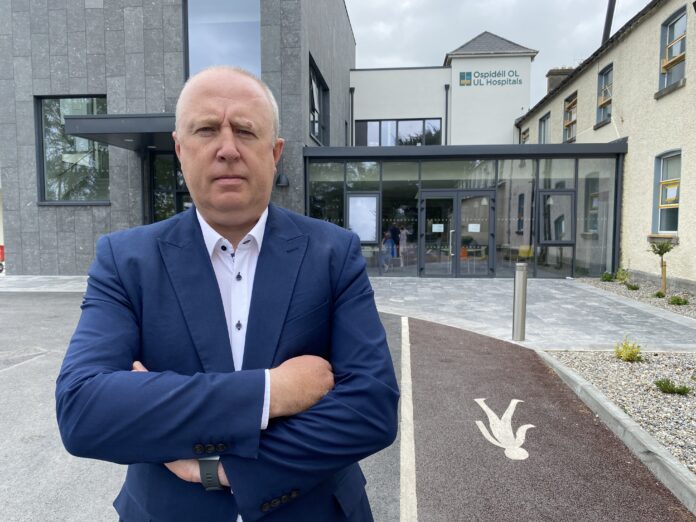
By David Raleigh
The UL Hospitals Group, which is managing worryingly high numbers of patients with COVID-19, and patients on trolleys, has urged people who are not yet vaccinated against Covid-19, to do so, in order to help it offset unprecedented pressures on University Hospital Limerick (UHL).
The Limerick hospital, which has the only 24-hour emergency department in a catchment of around 400,000 people, is the most overcrowded in the country, and has the highest number of Covid patients.
A near-record 90 patients were on trolleys at UHL last Wednesday, followed by 79 on Thursday, and 65 Friday, according to statistics published by the Irish Nurses and Midwives Organisation.
The hospital was treating 47 Covid patients – including six patients in Critical Care – as well as 24 suspected Covid patients on Thursday, according to latest figures published by the Health Service Executive.
There were only two general beds and two critical care beds available, out of the hospital’s 531 total bed capacity.
Chief Clinical Director, UL Hospitals Group, Professor Brian Lenehan, called for “maximum possible uptake for COVID-19 vaccination” as the incidence of transmission of the deadly virus in the Limerick region remained high.
Despite recent repeated calls on the public not to attend the Emergency Department at UHL, the hospital has been trying to manage record numbers of patients presenting there.
“October to date has shown no trend of reversal in demand for emergency services. Last month, average daily attendances at the ED were 240, 23 per cent higher than the 195 daily average in 2019, the last full year pre-pandemic,” said a UHL spokesperson.
“During September, daily attendances exceeded 250 on 14 days of the month, reaching a high of 290, and on only two days of the month were attendances fewer than 200. This trend has continued into October, which has seen on average 243 people attending on weekdays, and a relatively high average of 190 attendances for the two weekends in the month so far,” they added.
Injury units in the region, treating non-life threatening injuries, such as broken bones, dislocations, sprains, strains, wounds, scalds, and minor burns, are open across the region as an alternative to the ED.
“We ask people to consider all appropriate care options before attending the ED. The injury units in Ennis and Nenagh are open from 8am to 8pm, and St John’s Hospital from 8am to 7pm. Anyone with less serious illness or conditions should contact their GPs or out-of-hours GP services,” said the spokesperson.
Professor Lenehan urged unvaccinated people to attend newly scheduled no-appointment, walk-in vaccination clinics this weekend.
The latest Pfizer Dose 1 and 2 vaccine clinics for adults, and children aged 12 and over, are being held at vaccination centres at the Abbey Court Hotel, Nenagh (2pm-7pm, Friday); West County Hotel, Ennis (5pm-7pm, Saturday); and Limerick Racecourse (2pm-7pm, Saturday and 2pm-5pm, Sunday). Those who received AstraZeneca Dose 1 can receive the Pfizer vaccine for their second dose.
Prof Lenehan said the need to go for the highest levels of vaccination was underlined by current figures for incidence of COVID-1; numbers of hospitalisations from the disease; and admissions to critical care: “COVID-19 is still with us, and indeed, we are going to be living with it for some time. Throughout the pandemic, we’ve seen how the contagiousness of the disease can make small numbers spiral quickly out of control, but, we have to get as close to 100 per cent vaccination as possible.”
Up to October 10, 365,875 vaccines have been administered under the UL Hospitals Group vaccination programme since it began on January 4, as well as 2,378 additional vaccine doses to people with weakened immune systems, and 589 booster doses to people in residential care settings in the region.









